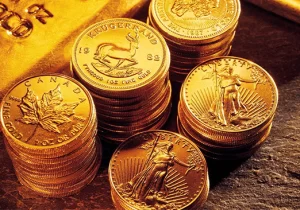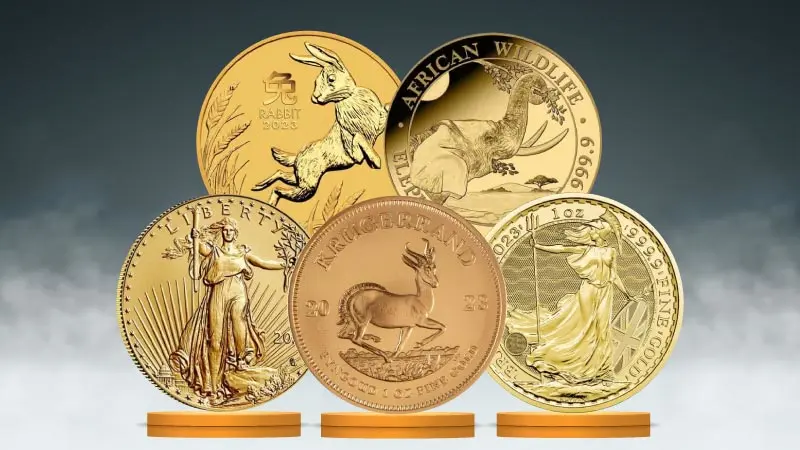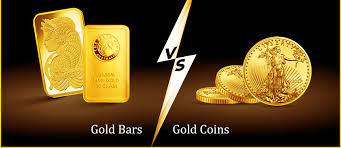Gold coins are made from precious metals of various grades. You may be surprised at the number of coins that are created from pure gold of the highest standard. Let’s take a look below at the benefits of buying mixed-carat gold coins and some of the interesting physical and visual properties inherent in mixed-carat gold coins.
Samples of gold from which coins are created
The fineness of gold in coins is measured in fractions or percentages and is usually expressed as a decimal fraction. Thus, a coin made of 0.999 gold, respectively, consists of 999 parts of gold out of 1000, and 1/1000 part falls on other metals.
This is called a millesimal breakdown because it is the 1000 part in the denominator. You need to understand that the sample of the coin does not say anything about the weight of the coin. As a rule, most of the coins that have the status of legal tender were created from precious metals (including silver coins) with a fineness of 0.900. They were intended for circulation, that is, for everyday use, so they had to be durable. 917 British gold Sovereigns.
Most modern coins are made from 0.999 gold. Therefore, they are 99% gold. Note that it is almost impossible from a technical and production point of view to mint coins consisting of 100% gold. Why? The fact is that the production of coins from pure gold is a complex process, since the higher the sample, the softer the metal. In theory.

a coin that is 100% pure gold will be too soft to mint and will not be as physically stable as a coin containing a few fractions of copper or other metals that increase the overall hardness and physical stability of the coin. The production of such coins is technically impossible, but at the same time, coins are produced from almost 100% gold, which allows investors and collectors to buy products from ultra-pure precious metal. We are talking about gold coins with “four nines” and “five nines” (0.9999 and 0.99999 fineness of gold, respectively). They are minted by some of the most famous and technologically advanced mints in the world.
Gold bullion coin of Canada “Maple Leaf”
The Royal Canadian Mint is known worldwide for the production of a variety of ultra fine gold coins. It is one of the few mints in the world that regularly strikes five nines gold coins.
Among them are special editions of the gold “Maple Leaf” from 0. It has been minted since 1979. The bulk of the circulation falls on coins with 0.999 and 0.9999 samples.The coin “Buffalo (Buffalo)” depicts the corresponding animal. The design is based on the Buffalo (Buffalo) nickel which was produced from 1913-1938. The golden “American Eagle” is minted from a precious metal of 0.917 fineness, but at the same time it is one of the most popular gold investment coins in the world.
and the golden “Buffalo (Bison)” is minted from a precious metal of 0.9999 fineness, also becoming a very popular coin, being the only American coin with such a high test. Initially, it was minted in such weight categories – 1/10, ½ – but now only the ounce version is produced. Again, keep in mind that a higher fineness does not mean more actual gold than other coins. An ounce gold “American Eagle” consists of the same amount of precious metal (1 ounce) as a gold “Buffalo (Bison”), although the first coin was created from gold “only” 0.917 fine.
Austrian gold investment coin “Philharmoniker”
The Austrian Mint annually mints the Vienna Philharmoniker gold bullion coin. This coin has been the most popular in Europe and one of the most sought after around the world since the late 1980s. As in the case of the above coins, the golden “Philharmoniker” is minted from a precious metal of 0.9999 fineness. The coin has a very beautiful design. The coin is named after the world-famous Vienna Philharmonic Orchestra, that is, this piece is dedicated to a cultural heritage site. The obverse depicts a range of musical instruments, while the reverse depicts the Vienna Concert Hall.

The Perth Mint, located in Western Australia, turns most of the mined precious metal into investment bars and coins. As for the coins, the main one is the Kangaroo gold bullion coin. It is not surprising that the coins were created from 0.9999 fine gold. The annual update of the reverse design is of great interest to this series from investors and collectors. In addition to the standard ounce coin, ½, ¼ and 1/10 ounce coins are also issued.
China Gold Bullion Coin “Panda”
A popular series of investment coins for individual and large institutional investors is the Chinese gold “Panda”. This coin will be an attractive addition to many coin collections, given the limited mintage that the Panda is produced each year by the Central Mint of the People’s Bank of China (colloquially: China Mint). Another feature that draws attention to this series of coins is the annual renewal of the reverse design. Hence the constant interest of collectors in the “Panda”.
Gold “Pandas” are the first investment coins that have an annual reverse reverse. In the footsteps of China, other series of coins followed (in particular, those issued in Australia). Unlike the above coins, the Chinese gold “Panda” consists of a precious metal of “only” 0.999 fineness. The Mint recently changed the weight of the coins from troy ounce (31.1 g) to 30 g. Despite the reduction in gold weight, the low mintage of coins from this series explains the presence of a higher premium on them compared to the gold rate.





